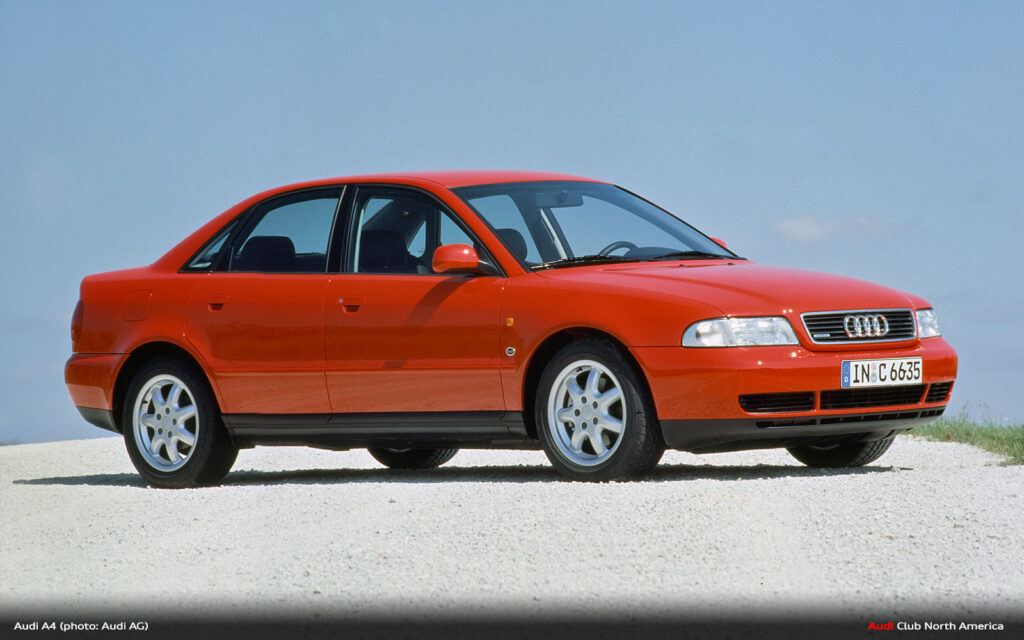
Audi A4 Celebrates 30 Years with quattro Traction with Sophistication
São Paulo, Brazil – Exactly 30 years ago, Audi presented the A4 to the world, which revolutionized the medium sedan segment with its disruptive look and innovative technologies, winning a legion of followers around the world since then. In Brazil, the brand of the four rings celebrates the model’s birthday amid the celebrations of its three decades in the country. Among the manufacturer’s launches made throughout this year is the new Audi A4 quattro®, which offers the consecrated all-wheel drive with ultra technology and new trim, safety, technology and comfort items. In addition, the new traction system contributed to making the vehicle more agile – acceleration from 0 to 100 km/h is performed in just 6.7 seconds (0.4 seconds less than the previous model). Faster, equipped and safer, the model “trinted” at the height of its technology and sophistication. Learn below a little more about the history of this vehicle that, in its trajectory, has established itself as one of the most consecrated vehicles of the German automaker worldwide.
[source: Audi do Brasil]
First generation
The year 1994 marked a turning point in Audi’s product range, when the 80 and 100 lines were respectively replaced by the A4, A6 and A8 models. This was the debut year of the Audi A4, which showed a stylistic break of the brand in the medium sedan segment. From the new name that sounded chic and modern, through the exciting and contemporary rounded design to the exquisite and spacious interior, everything conveyed sophistication and modernity. The slogan “Vorsprung durch Technik” – innovation by technology – had been used for some time, but gained another dimension with the arrival of the A4.
Many of the robust and reliable components of the 80 line were maintained, but little by little the model gained elements that translated the essence and pioneering of German engineering, such as the revolutionary 1.8 four-cylinder engine and 20 valves (five per cylinder) and the Tiptronic automatic transmission.
Immediately, the newcomer became a bestseller: the following year sales exceeded 120,000 units. And with so many A4 on the streets, the new visual identity of the German company automatically propagated. Although the largest and most sophisticated A8 – the first line car with aluminum body, which in addition to reducing weight prevented corrosion and increased structural rigidity – embarked on more refinements and status, it was the A4 that stamped the premium brand stamp on Audi.
In February 1996 was the launch of the A4 Avant, which replicated the entire aesthetic and technological revolution in a stan inn body. At the Frankfurt Motor Show (Germany) the following year, it was the turn of the S4 and S4 Avant sports cars. Equipped with a 265-horsepower 2.7 V6 engine, they revealed that a medium executive sedan could turn into a sports car.
It was at this stage that the A4 started for its longevity and career victory on the tracks. The first title came already in 1998, with the German Fran Biela winning the British Touring Car Championship.
It was the haringer of the powerful RS 4, presented in 1999. First model designed by the quattro GmbH division, it had its engine spiced up by the renowned English preparer Cosworth, a member of the Audi Group since 1998. With 380 horsepower, it accelerated to 100 km/h in just 4.8 seconds, a brand compatible with any sports car of the time. Produced between June 2000 and August 2001, it totoled 6,046 manufactured units, now converted into rare copies and coveted by collectors of the brand.
The first generation of A4 says goodbye at the turn of the decade with more than 1.6 million units and exceeding all the company’s expectations.

Second generation
A new A4 arrived in the showrooms at the turn of the millennium, in November 2000. With a high waistline and bumpers integrated into the body, it was one of the most aesthetically audacious cars of its time. As usual, the avant version came in the sequence.
For the first time the A4 got a convertible version, to in 2004 present to the world the most powerful Audi convertible in history: S4 Cabriolet, with 350 horsepower.

Third generation
In 2004 a new generation debuted that had ten engine options, four of them new. One of the highlights of this phase was the introduction of the FSI (Fuel Stratified Injection) system, which increased the efficiency of fuel injection of 2.0 engines, of 200 horsepower, and 3.2 V6, of 255 horsepower.
Before saying goodbye, in 2007, it became the first A4 to hold the RS 4 sports line in the three bodies: wagon, sedan and convertible – all equipped with a 40-valve V8 and 420 horsepower, with the Cabriolet being the rarest of all, with only 1,194 units produced between 2006 and 2008.
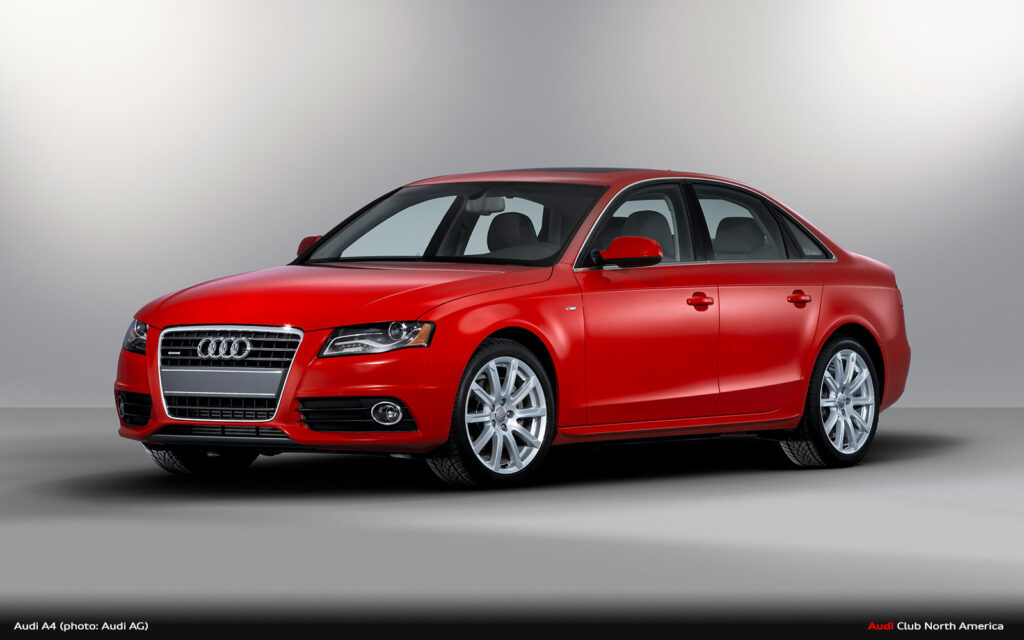
Fourth generation
A milestone in the A4 career occurs in December 2007, when the B8 generation debuts Audi’s new modular platform, called MLP, which served as a cradle also for the newcomers A5 and Q5, among other models. Compared to its predecessors, it was longer and wider, consequently more spacious internally.
The fourth generation is remembered by the first traces of one of the most influential designers in Audi’s history, Walter de Silva. One of its main signatures, the “single frame” type grid, is one of the signatures of the brand’s cars to this day. Other news for the A4 family were the DRL headlights, daytime operating, and the Allroad version – with quattro traction and high suspension, gave the adventurous character to the Avant van.

Fifth generation
Fifth line of the A4, the B9 generation arrived in 2016 up to 110 kg lighter than its predecessor, although again larger and more spacious. For the Brazilian market, one of the main novelties was the replacement of the 1.8 engine by a 2.0 of 190 horses and 32.6 kgfm of torque, coupled to a seven-speed dual-spated dual-chtch gearbox. For lovers of increasingly rare vans, the A4 Avant was the only option available.
In 2020, a restyling arrived at the bumpers and front and rear optical sets. In the cabin, the multimedia system received a new interface. Two years later, the world’s best-selling Audi was again updated, now with the consecrated 2.0 TFSI engine jumping from 190 horsepower to 204 horsepower, maintaining the torque of 320 Nm. The new set made the vehicle faster and more efficient, lowering its acceleration from 0 to 100 km/h from 7.3 to 7.1 seconds.
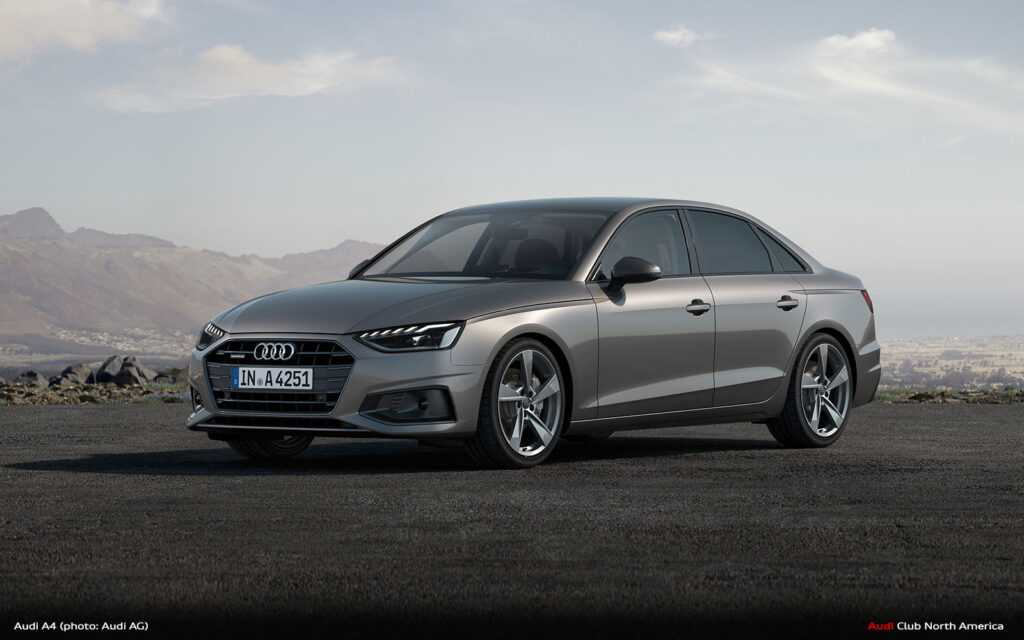
Quattro® ultra
In the 2024 line, the A4 reaches the peak of its dynamic performance with the consecrated quattro® traction, now with ultra technology – which further elevates safety levels, especially on slippery floors. The technology ensures total stability and control even in abrupt deviations, where the driver can keep the car in hand, without skidding or unwanted escapes.
It all started when engineer Jörg Bensinger tested a utility for the German army during the harsh winter of 1976. When he noticed that that 4×4 was faster on the snow than its more powerful similar, but with traction on only one of the axles, he wondered if a ride model would also be more efficient with all-wheel drive.
The idea was then taken to the Audi board of directors so that the first prototypes appeared the following year, mounted on the platform and suspensions of the Audi 80 – precisely the precursor of the A4.
When the company’s board of directors saw how that car dealt with the steepest mountain crossings in Europe without needing special tires or chains to gain traction on the ice, it did not hesitate to give the green light to production. Named “quattro”, the first model equipped with revolutionary technology debuted at the 1980 Geneva Motor Show.
Available in the complete network of dealers of the four-ring brand throughout Brazil, the new Audi A4 quattro® offers two finishing versions and prices between R$ 333,990 and R$ 359,990. The model is one of the launches that celebrate the 30th anniversary of the four-ring brand in the Brazilian market – coincidentally, the same age as the sedan. Avant-garde, luxurious and efficient, the A4 reaches its peak as a true classic.
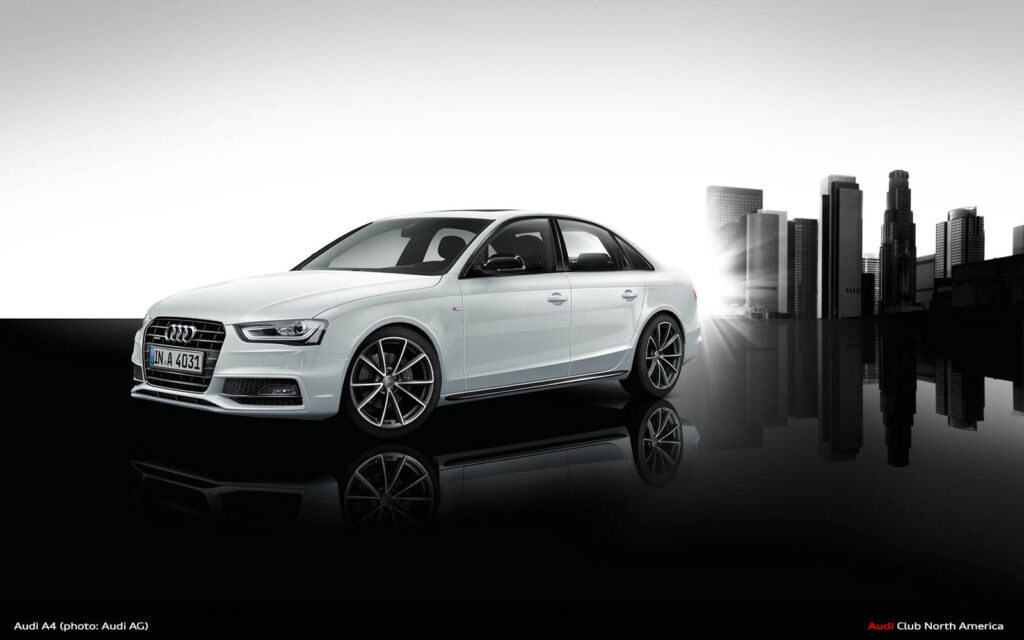
Audi of Brazil
Audi celebrates 30 years in Brazil in 2024, a trajectory full of challenges, overcoming and achievements. The first appearance in the country occurred in 1992, at the São Paulo Motor Show, with the Audi 100 sedan. The following year, the eternal idol Ayrton Senna became the official representative of the brand on national soil, with Senna Import.
In 1994, the coveted vehicles of the automaker began to be officially marketed here and soon gained the streets of the country, with unprecedented technologies and unprecedented driving dynamics. Currently, the brand of the four rings is consolidated as one of the most desired in the country, with administrative headquarters in the city of São Paulo (SP), logistics terminal in Vinhedo (SP) and vehicle factory in São José dos Pinhais, in the metropolitan region of Curitiba (PR), where the Audi Q3 and Audi Q3 Sportback models are currently produced.
Audi do Brasil has an integrated business and sustainability strategy, with projects that incorporate environmental and social commitments on the themes of electrification, reduction of carbon emissions, diversity, inclusion, culture and education. It is one of the pioneers in the ESG agenda by encouraging electromobility and has already invested almost R$ 90 million in charging infrastructure in Brazilian territory, offering electric chargers in more than 40 dealerships and in several other points. It is a global commitment of the company to act to shape the sustainable mobility of the future and generate a positive impact on society and the environment.









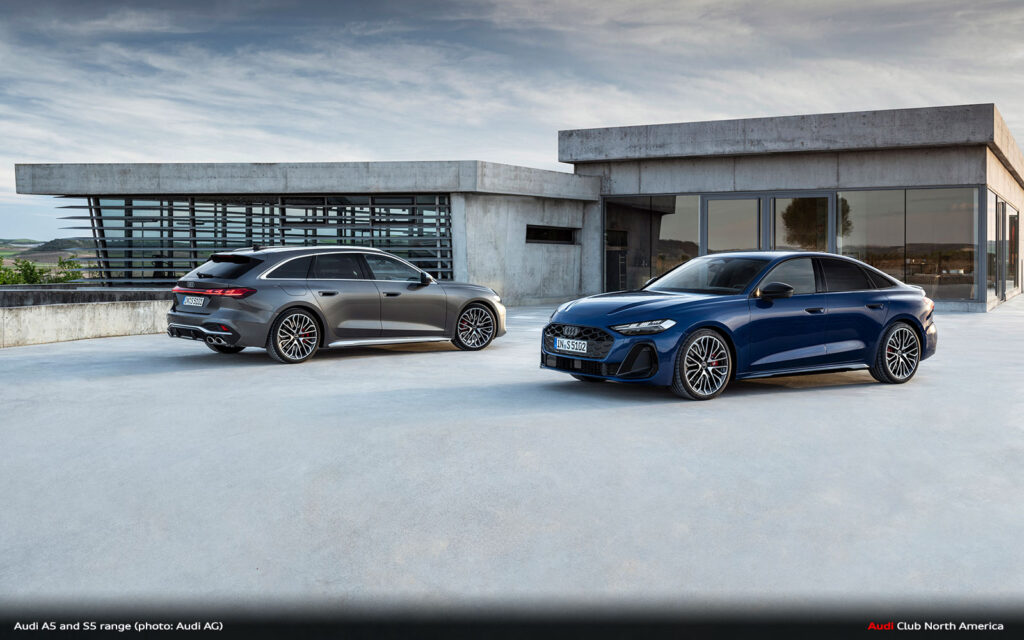
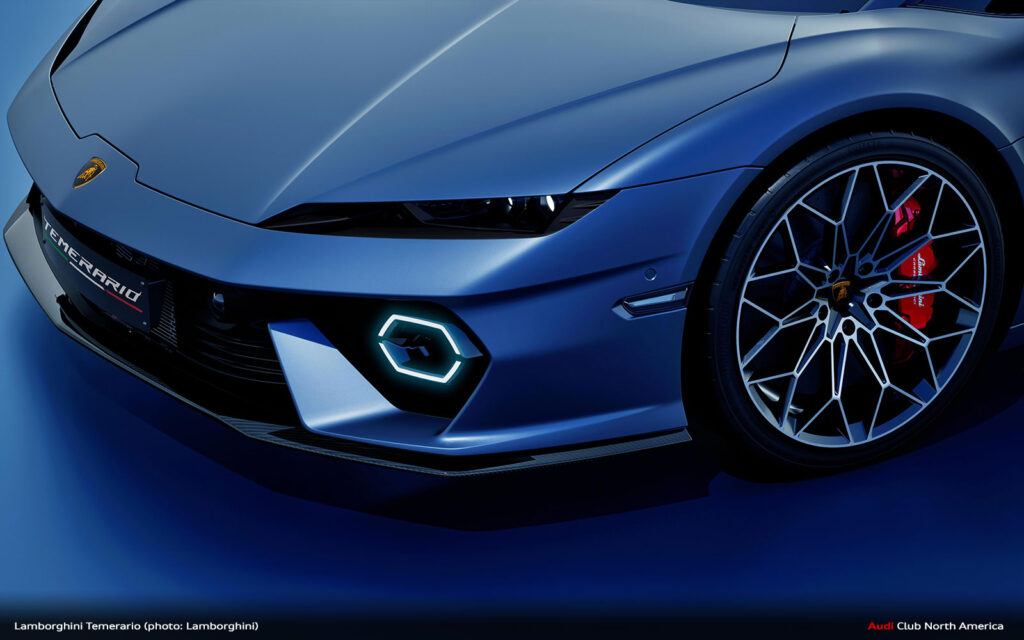

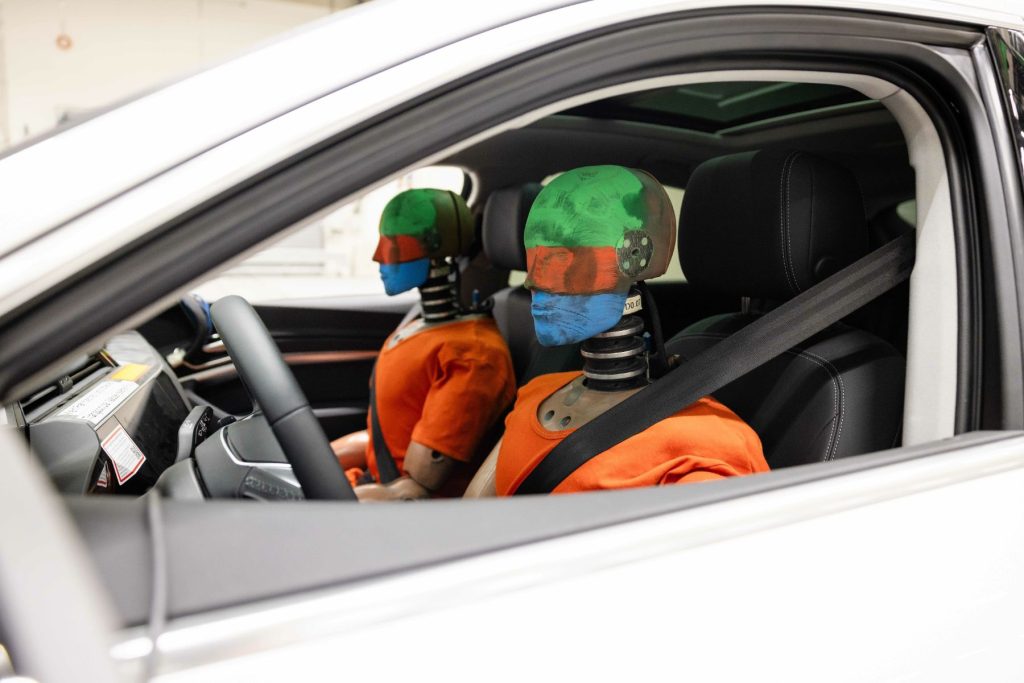

Responses